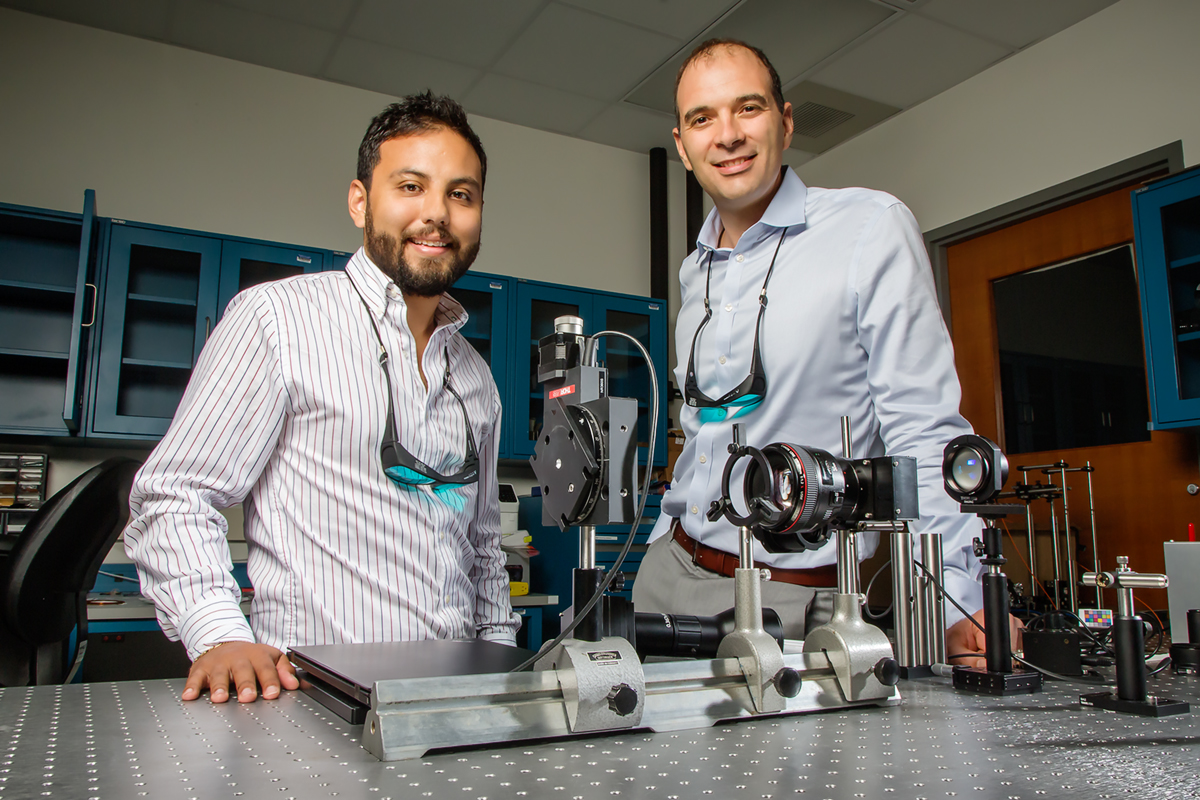By Warren Miller, contributing writer
Where does science look for inspiration to improve optical imaging technology? Apparently, the seafood platter. An Illinois research team has developed a camera based on the eye of the mantis shrimp that is capable of detecting both the color and polarization of light. This provides visibility into a world unseen by human eyes, with implications as wide-ranging as improved underwater research and early cancer detection.
While the human eye contains just three different types of color receptors, the mantis shrimp’s eye has 16 different such receptors, as well as six polarization channels, making it one of the most sophisticated ocular devices naturally occurring in nature. Polarization, in particular, is particularly useful to perceive. Most humans only know polarization from glare-reducing sunglasses, but animals use polarization to help find food, navigate by sensing polarization of the sky, or even as a covert communications channel.
The research behind the camera was recently published as “Bio-inspired color-polarization imager for real-time in situ imaging” in Optica, a journal of the OSA. Victor Gruev, a professor of electrical and computer engineering at the University of Illinois and a co-author of the study, helped develop the new camera with graduate student Missael Garcia.
“Nature has constructed the mantis shrimp eye in such a way that photosensitive elements are vertically stacked on top of each other,” said Gruev. “These organs not only surpass the sensitivity of our own visual systems, they also capture more visual information, using less power and space, than today’s most sophisticated, state-of-the-art cameras.”
According to Garcia, the same laws of physics that apply to the mantis visual system also apply to silicon materials, the material used to build our digital cameras. By stacking multiple photodiodes on top of each other in silicon, they can see different colors without the use of special filters. This occurs because the sensors absorb light differently for different wavelengths. Red penetrates deeper into the stack, for instance, meaning that lower sensors will respond only to the red light while upper sensors are sensing the blue energy. And by arranging the sensors in a periodic fashion, polarization becomes detectable. “By combining this technology with metallic nanowires, we effectively have replicated the portion of the mantis shrimp visual system that allows it to sense both color and polarization,” he said.

Illinois electrical and computer engineering professor Viktor Gruev, right, and graduate student Missael Garcia. Image source: illinois.edu.
The polarization of light is the direction of oscillation of light as it’s distributed through space. According to the duo, the human eye isn’t nearly sensitive enough to detect polarization, and neither are the most advanced digital cameras built to date. Undersea animals use polarization for both communication and navigation due to its higher efficiency underwater, where illumination levels are lower. Being underwater, often very far underwater, reduces background light noise, which is much more familiar to use above-water dwellers. Polarized light seems to be a much better communication choice underwater, not unlike the way that whales use specific sound frequencies that can travel much further underwater than in air.
The implications of this new technology in the area of underwater research are numerous. Much of marine life exploits both color and polarization in their vision systems. The ability to mimic their perception will help biologists learn how these creatures navigate, hunt, and even communicate using polarization effects.
But the researchers believe that their camera has uses closer to home as well. Earlier research has shown that polarization can be used to detect cancer in its early stages. Polarization sensors fitted to a colonoscope were able to detect the disordered nature of cancer cells in the human colon, for example. “The notion that we can detect early formation of cancer is what is driving this research forward,” said Gruev. “The cost of this technology is less than $100, which will enable quality health care in resource-limited places around the world.”
Advertisement
Learn more about Electronic Products Magazine





